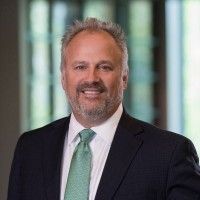Kenneth Koblan, PhD: New Pathway Treatment for Schizophrenia Stands Out
SEP-36856 helps patients with schizophrenia manage some of the side effects commonly found in antipsychotics.

Kenneth Koblan, PhD
A new upstream approach to treatment could be beneficial for schizophrenia patients, 1 of the more difficult conditions in psychiatry to treat.
Sunovion is moving forward with a phase 3 trial examining SEP-363856 to treat adult patients with schizophrenia.
SEP-363856 is an oral compound that has agonist activity at trace amine-associated receptor 1 (TAAR1) and 5-hydroxytryptamine type 1A (5-HT1A) that does not act on dopamine D2 receptors.
The investigators performed a randomized, controlled trial evaluating the efficacy and safety of the drug in 245 adults with an acute exacerbation of schizophrenia. Patients were randomly assigned to a 1:1 ratio to receive either SEP-363856 (50 mg or 75 mg once-daily) or a placebo for 4 weeks.
The investigators found the new treatment resulted in a greater reduction of Positive and Negative Syndrome Scale (PANSS) scores than placebo.
In an interview with HCPLive®, Kenneth Koblan, PhD, explained how the treatment will benefit a patient group that is notoriously difficult to treat.
HCPLive: Schizophrenia patients can be very challenging to treat, how important is it for new options to become available?
Koblan: The scale to look at the efficacy of agents is called the Positive and Negative Syndrome Scale.
That scale measures both the positive symptoms as delusions and hallucinations. It also measures the negative symptoms such as lack of emotion and social withdrawal and problems of cognition.
For the past 60 plus years schizophrenia medicines have relied on a really just a single target. An antagonist, the dopamine D2 receptor in terms of the pharmacology of the mechanism of all those drugs.
Those drugs have been working for 55 years since they were first discovered, but there has not been a new novel compounds in a new class of agents that has ever been registered.
And that's because, up until now, no one's been able to identify a different pathway of bringing benefit. So, the SEP-363856 compound is a new mechanism that works not as an antagonist at the dopamine D2 receptor but as an agonist at the TAAR1, 5-HT1A receptors to actually go and work upstream in a completely novel way from the existing class of medications.
These medications have adverse events associated with them. So, they come along with extra pyramidal side effects, movement disorders, parkinsonism. And over time, there can be very significant issues around cardiometabolic profiles such that lipids, triglycerides, insulin actually have very detrimental effects.
[In SEP-363856] there was a side effect profile, which was benign and very similar to placebo, both for the 28 days in the hospital and then it on the 6 month extension.
HCPLive: What makes schizophrenia more difficult to treat than other psychiatric conditions?
Koblan: It’s really the constellation of symptoms in the disease, which is a difficult patient population to treat. And we already spoke about positive symptoms, such as hallucinations, delusions, disorganized thinking. But it also brings along negative profiles around social withdrawal, a lack of emotion, an inability to actually feel pleasure.
Those anti-psychotic agents that are currently used, they don't actually treat any of those negative symptoms. They actually make them worse. And so, by making them worse, it makes the patient withdraw even more, have more emotion that they’re missing.
That’s what’s interesting and novel about SEP-363856. It works through a different pathway. It works through an upstream pathway, so that the patients now actually demonstrated improvement on a dedicated scale of negative symptoms that was included in the study.
So, we hope that we will be able to replicate the results in the large phase 3 program that we're conducting, but it's really a compilation of symptoms that schizophrenics suffer from, as well as cognitive impairment.
HCPLive: Is this treatment mainly for adult patients and is there any belief that it could also be used for pediatric patients?
Koblan: So, to date, we have investigated subjects that are 18 and 40 years of age. We are including adolescents in our next study.
In our phase 3 program, we will include adolescent patients. Schizophrenia typically is diagnosed, not in pediatric patients but more in the adolescent population.